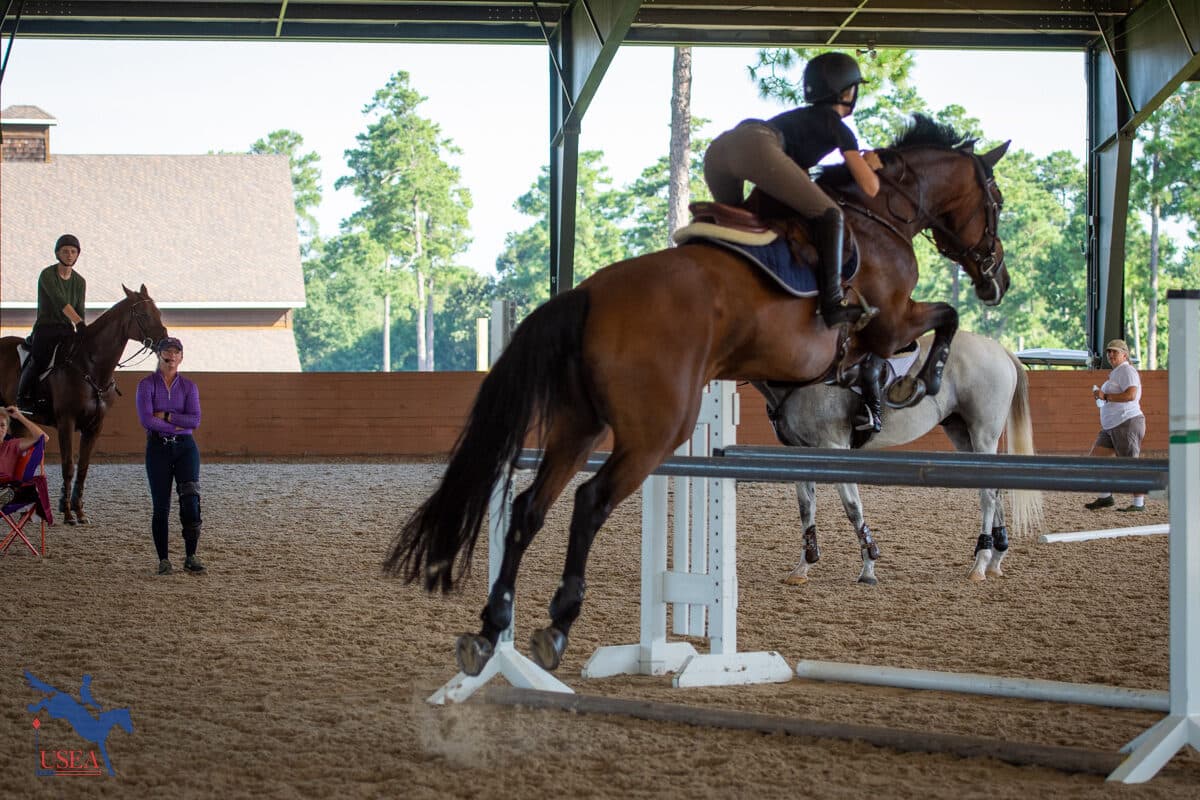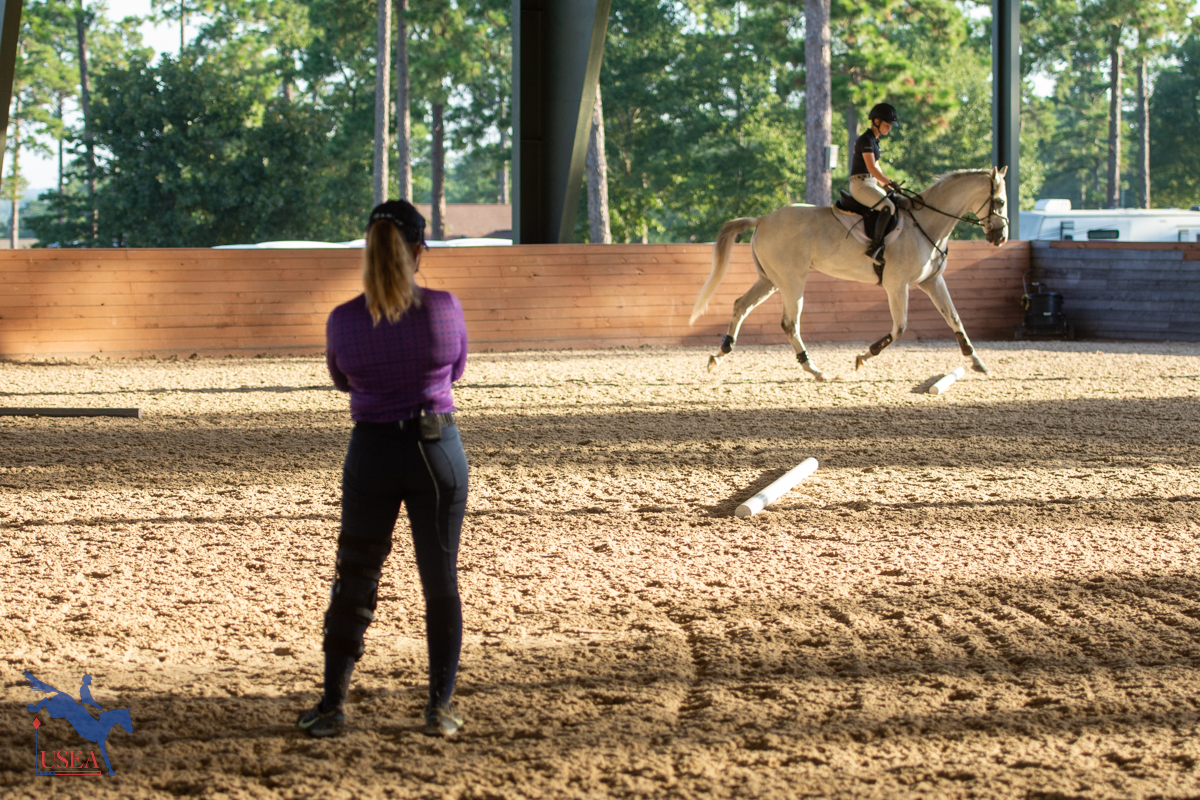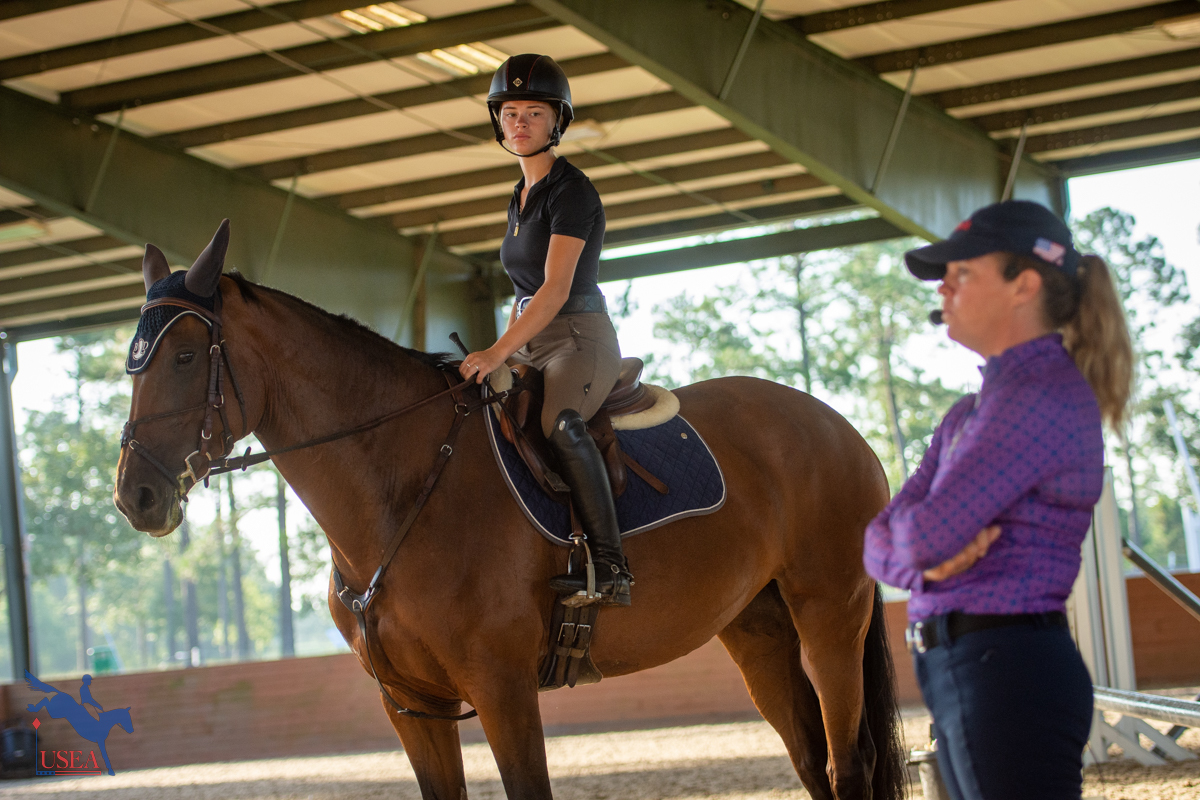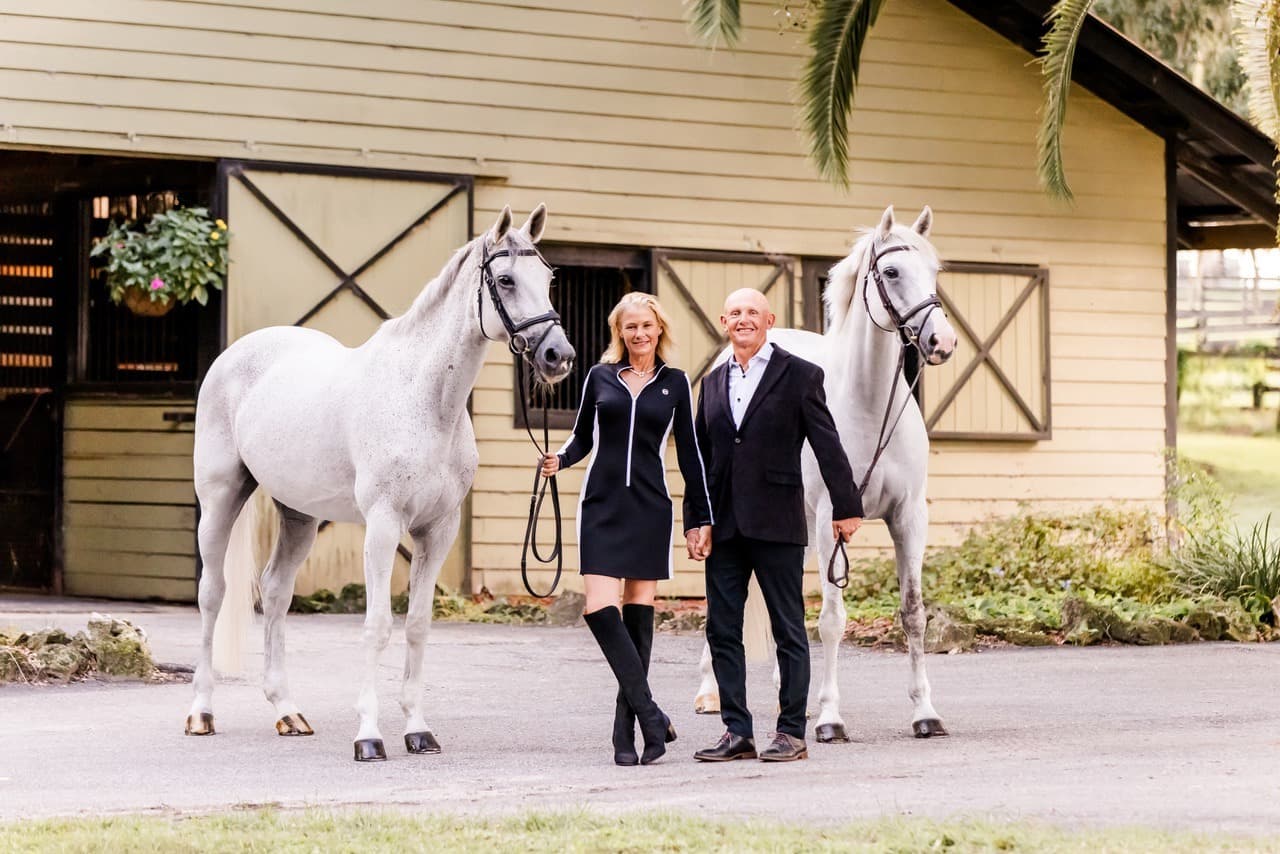Young Riders Find Consistency & Accuracy Over Fences in EA21 Regional Clinic at Stable View

Day two of the USEA Emerging Athlete 21 (EA21) regional clinic at Stable View built on the foundation laid on the flat during Monday’s lessons. Led by USEA Instructors’ Certification Program (ICP) Level 4 instructor Emily Beshear, the jumping lessons shared courses between each three-member group with takeaways tailoring each to each participant’s individual needs.
All selected riders were able to talk show jumping theory and practice Monday with Beshear while they set up the following day’s jump course, giving riders a sneak peek at the upcoming lessons.
“A big part of especially the show jumping and making the courses feel smooth is having the appropriate canter and that you can maintain that throughout the course,” Beshear told the group. “It’s about what everyone talks about in the jumping — the canter. And it’s not just about having the great canter, we need to have about a dozen canters.”
Beshear also shared that the horse’s responsibility is to clear each obstacle without knocking rails, and it’s the rider’s job to set them up for that success. To do this, she stressed the importance of riders maintaining balance in all three positions: a full seat, half seat, and two-point.
All participants began the same way: with four poles on a circle — a deceptively tricky exercise. Beshear instructed riders to break each pole into thirds, giving riders an added accuracy challenge.

“I want my horses to jump in a nice shape, to use themselves to jump clear. Some horses naturally jump in a nice shape and some we need to manufacture that a bit more. We want to make sure that as riders we have the ability to create different frames within the horse all while in multiple jumping positions. We start out by doing this over poles on the ground so we don’t interfere with the horse’s jumping ability if something goes wrong,” Beshear said.
The trot, Beshear shared, is an opportunity for the horse to focus on their footwork. Alternatively, the same exercise at the canter is more of a rider challenge. At the canter, the rider can change two variables to get a good ‘distance,’ according to Beshear:
1. Change the canter
OR
2. Change the line
On the circle, these young athletes were able to adjust both of these in a low-stakes setting. “My horses do pole work at least once a week. With these event horses, it’s so important to always be working on their footwork.”
Over fences, Beshear gave riders a course including bounces, oxers, and verticals on a variety of related differences that could challenge each group in different ways.
The first and third groups worked toward producing a powerful, adjustable canter over the ground poles, and maintaining that through all the course work.
“As I’m going up the levels I struggle with keeping my horse relaxed because she can be hot and tense, so we worked through a lot of exercises yesterday to find moments where I can allow her to relax,” Keirsten Miller said. “Today that goes over into the jumping too, Emily helped me find areas where I can once again give and let her stretch during the course.”

The second and fourth groups focused much of their energy on achieving accuracy. For this, Beshear had these riders begin by coming off a short turn to a vertical with ground lines fanned three strides away in either direction.
“For me accuracy is consistency. Accuracy means being able to come to this line 12 times in a row and jumping it the same all 12 times,” Beshear explained.
Beshear was thoughtful throughout the day to make sure that riders were faced with appropriate challenges.
“I really wanted to do the program because the premise of it is so appealing, especially for our age group. It can get really prestigious trying to make the under 25 teams and this seemed a lot more inclusive than any other program for this age group,” said Julia Fanello. “The lessons catered to each of us – every exercise pushed you, but it was achievable.”
The EA21 program has a mission to mold more than just participant’s riding – it aims to create well-rounded horsemen, and participants forged new friendships with like-minded riders over the two-day experience.
“I think the clinic is a great opportunity to connect with riders who are in the same place as you – you can build that community. And watching other lessons, you can see how all that insight can be applied to other horse and rider pairs,” said Dylan Philipps.
For more information on the EA21 Regional Clinics, click here.

























